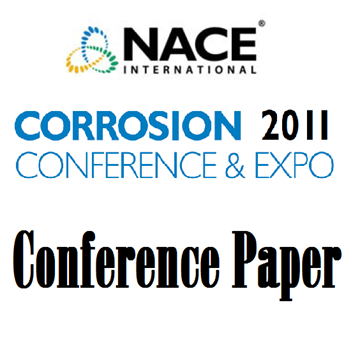Search
51318-10931-Impact of oxygen pollution on H2S corrosion and hydrogen permeation
Also Purchased
11120 Sulfur Corrosion Due To Oxygen Ingress
Product Number:
51300-11120-SG
ISBN:
2011 11120 CP
Publication Date:
2011
$20.00
51314-4299-Impact of Oxygen Ingress in CO2 Corrosion of Mild Steel
Product Number:
51314-4299-SG
ISBN:
4299 2014 CP
Publication Date:
2014
$0.00
02270 Corrosion Consequences of Oxygen Entry Into Oilfield Brines
Product Number:
51300-02270-SG
ISBN:
02270 2002 CP
$20.00




